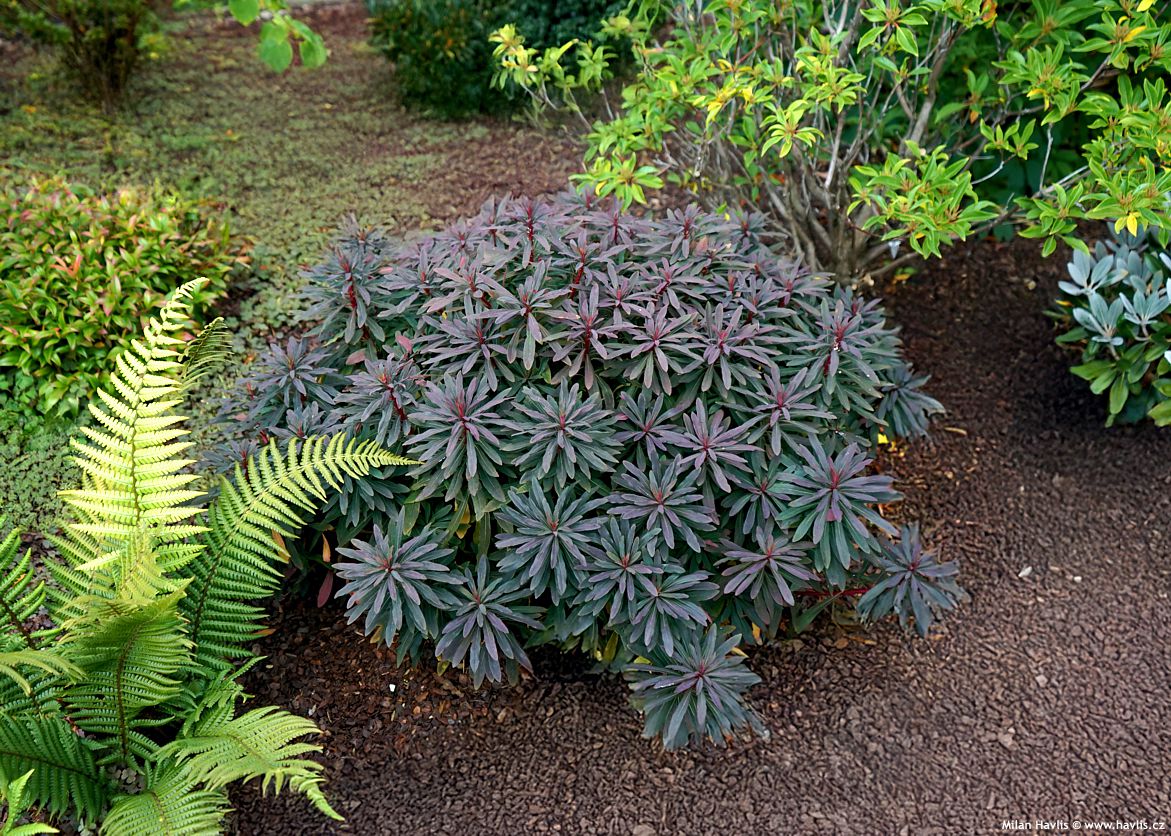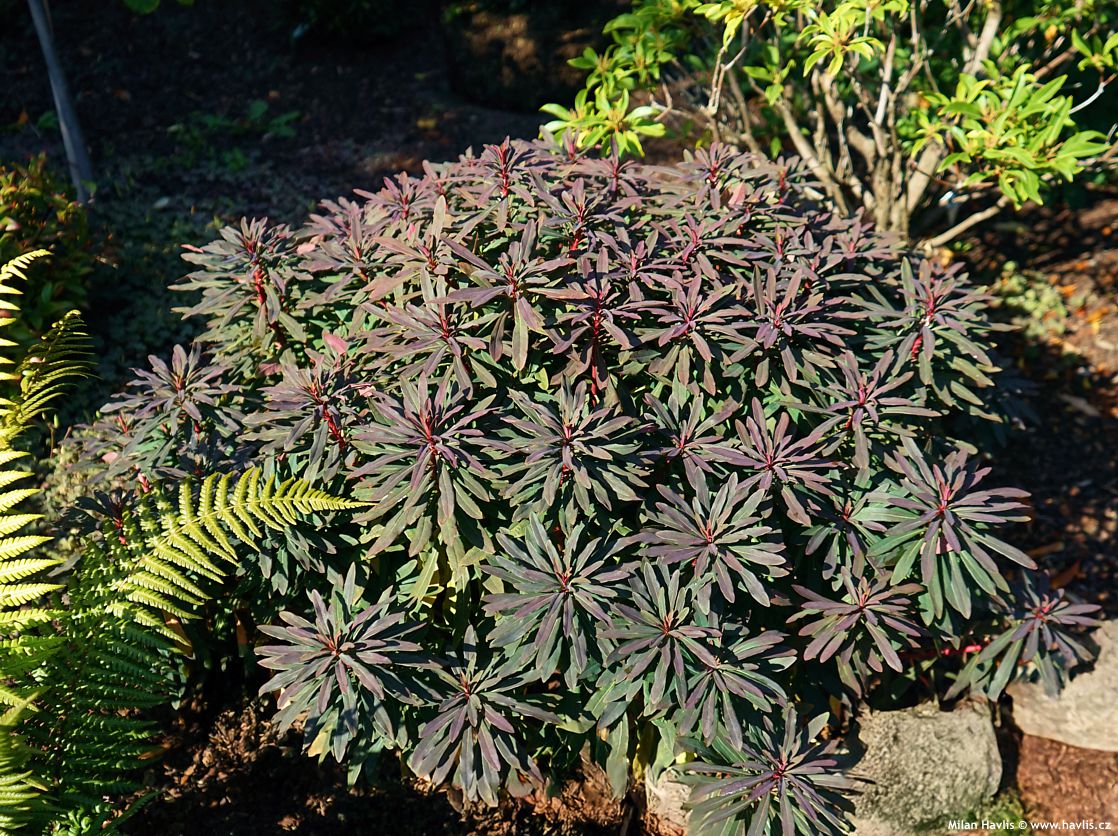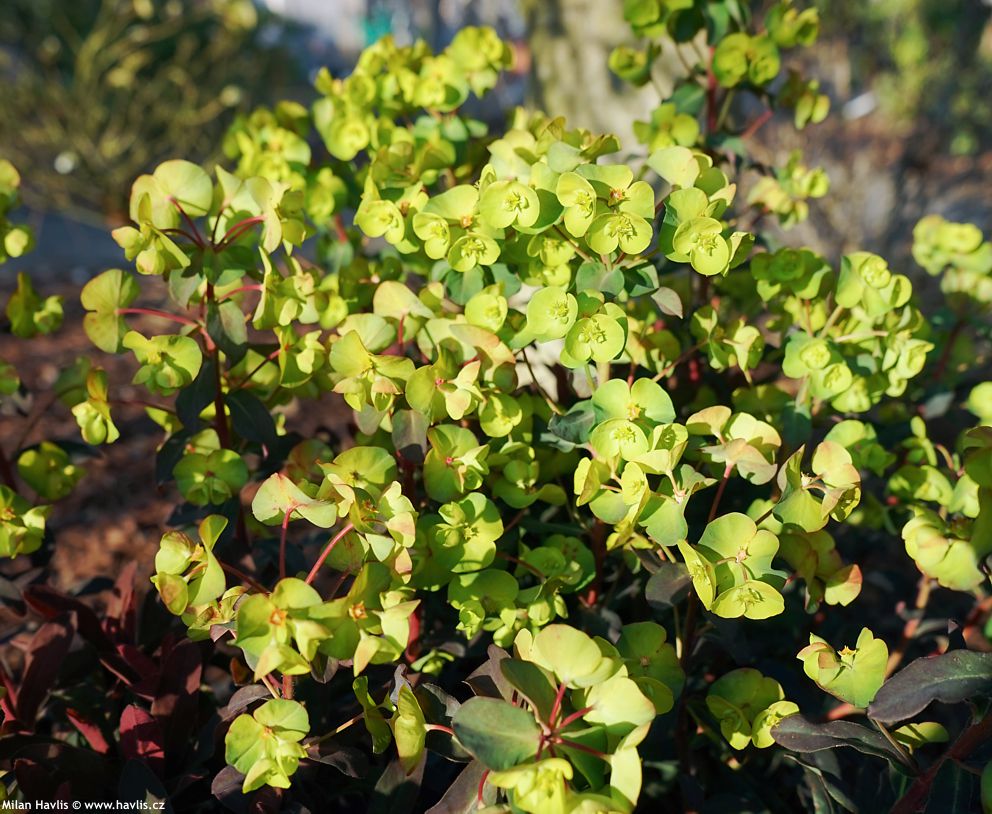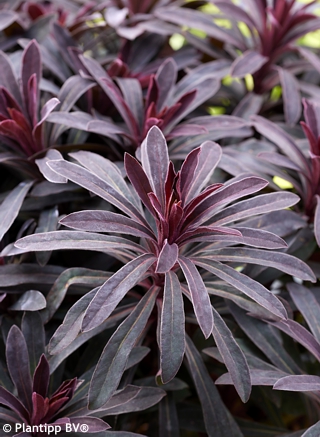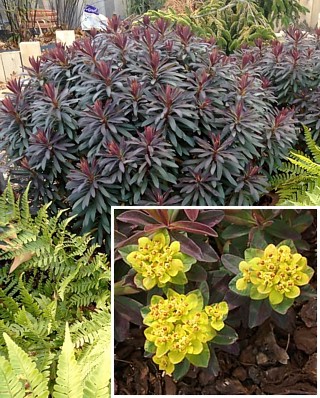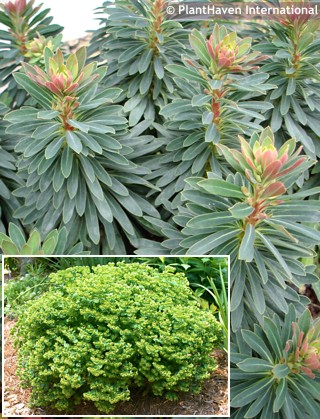Euphorbia amygdaloides 'PURPUREA' wood spurge
Euphorbia
The genus Euphorbia belongs to the spurge family (Euphorbiaceae) and includes more than 2,100 species of herbs, shrubs, and trees, making it one of the largest genera of flowering plants in the world. Individual species can differ so much that you would hardly assign them to the same family. They occur on every continent except Antarctica, with the greatest diversity in tropical and subtropical Africa, Madagascar, and the Americas, though many species also extend into the temperate zones of Europe and Asia. The genus was first described scientifically by Carl Linnaeus in 1753 in his Species Plantarum, naming it in honour of the Greek physician Euphorbus, personal doctor to King Juba II of Numidia (52 BC–23 AD), who used certain spurges in medicine. A hallmark of all spurges is their unusual inflorescence called a cyathium – a miniature cluster of male and female flowers surrounded by showy bracts, which at first glance looks like a single bloom.
Did you know that the poinsettia (Euphorbia pulcherrima) is also a spurge? In Mexico it was already known to the Aztecs under the name Cuetlaxochitl, while they used its red bracts to dye fabrics and to treat fevers back then, today it is a symbol of Christmas around the world. Some spurges even pretend to be cacti. Take Euphorbia trigona, known as the “African milk tree”: its tall, angular, spiny stems could easily fool a layperson into thinking it was a cactus, and in Africa it was planted around homes as a living hedge to ward off evil spirits and thieves. The difference, however, is fundamental: cacti come exclusively from the Americas and their spines are modified leaves, while spurges exude milky sap and their spines are modified branches. Another curious character is Euphorbia milii, native to Madagascar. Truly, it looks like anything but a spurge. In Christian tradition it became the symbol of Christ’s crown of thorns because older plants develop densely spiny, twisted stems. And I must also mention our faithful, low‑maintenance houseplant, the Madagascar jewel (Euphorbia leuconeura), which reliably “weeds” itself by shooting ripe seeds across the room and wherever they land in soil, a new seedling soon appears.
Purpurea is a valued spurge variety which originated as a garden selection of the wood spurge, a species native to European deciduous forests. Its exact originator is unknown, but it was probably selected in England as early as the 19th century and has since become one of the most widespread dark‑leaved forms. It is popular mainly for its deep purple foliage, which strikingly contrasts with the ordinary green types.
‘Purpurea’ is an evergreen, semi‑woody perennial (a so-called subshrub) with a compact, low‑spreading habit. It grows 40–60 cm tall and a little more in spread. The leaves are dark maroon, most intense from autumn till spring, while in between they turn dark olive‑green with only a reddish tint. However the inflorescences light up the plant completely – from April to June, typical chartreuse‑green cyathia appear, which look especially showy against the dark foliage. After flowering, it is best to remove the entire flowering stems so the plant remains compact and produces new shoots. Always work with gloves, as spurges exude a milky sap that can irritate skin and eyes.
In the landscape, ‘Purpurea’ works beautifully as a contrasting element – its dark foliage highlights pale‑leaved perennials such as golden heucheras, golden‑leaved choisya or privet, and the green-leaved heavenly bamboo. For a cheerful spring, plant daffodils or yellow tulips in front or around it. It also combines well with ferns, whose fronds add contrast, texture, and drama to the border. In modern landscapes, it is often used as a colourful accent surrounded by pale gravel and paired with neat, fine‑textured grasses such as fountain grass, feather grass, or fescue.
Euphorbia amygdaloides and its hybrids are woody perennials typical of the warmer, though not arid, regions of the Caucasus and Turkey. They tolerate high summer temperatures but require more moisture than the drought‑adapted vegetation of southern European rocks and plains. This explains their great popularity in Great Britain, where the consistently high humidity allows spurges to thrive. In our continental conditions, Galaxy Glow does best in moderately moist but well‑drained soil of any pH. It should be kept lightly moist for the first few months, but beyond that they will rarely need more water than natural rainfall provides, especially if mulched. Feeding before flowering, and again at the end of summer is beneficial, though not essential. Purpurea is and old and hardy variety proved to survive at least –25 °C without winter protection. Just avoid waterlogged soil where its roots are often attacked by soil fungi (fusarium). It is not suitable for outdoor planters, as it dislikes sudden fluctuations in temperature and moisture.
Last update: 13-05-2019; 02-10-2025






























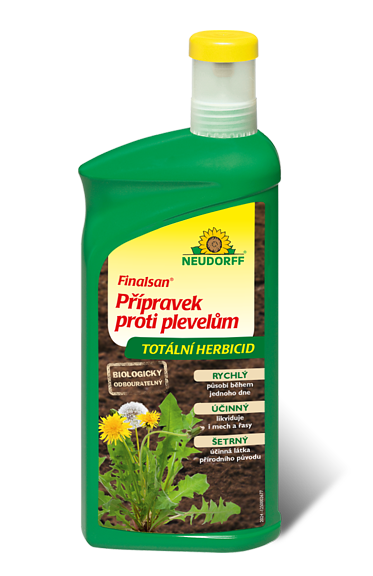


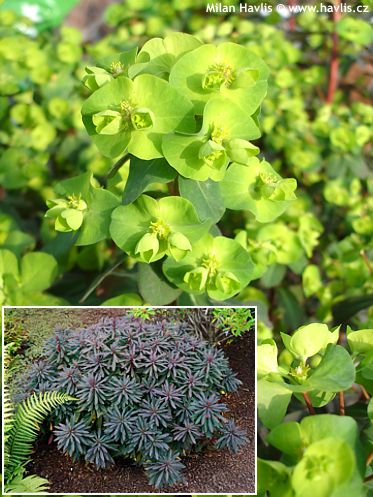
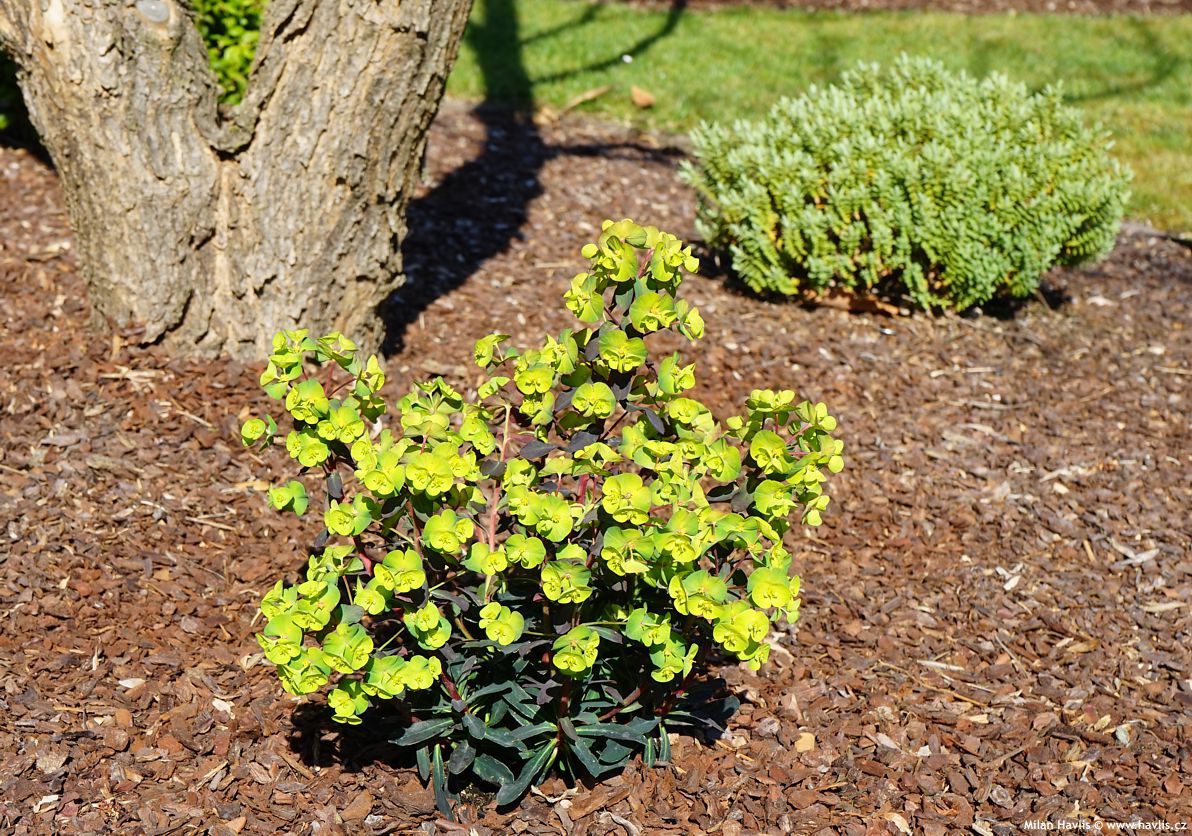
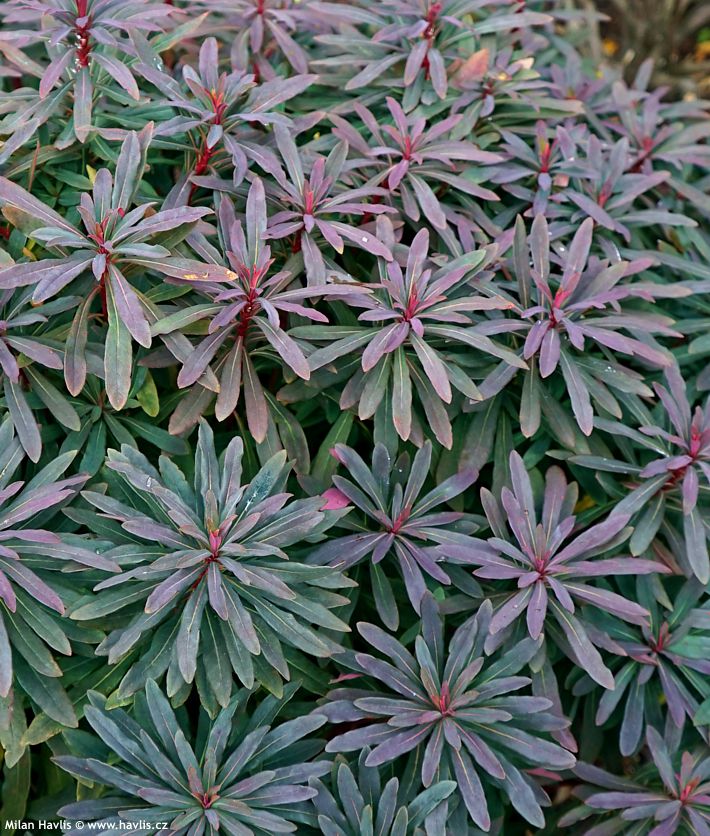
.jpg)
